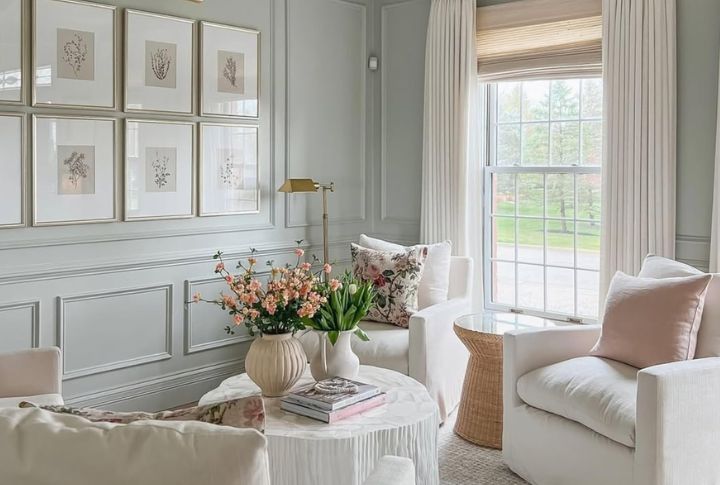
Vertical blinds are old news and honestly, kind of a pain. If you’ve ever tried untangling those clunky slats or listened to them clatter every time the door opens, you know what I mean. Nate Berkus, a “HGTV” star, noticed too—and he’s come up with something that’s way more stylish and surprisingly simple. He’s rethinking how sliding doors fit into the overall vibe of your home.
Swap Slats For Drapery Panels
Berkus points to drapery panels as a more refined and flexible alternative to vertical blinds on sliding glass doors. He suggests, “Consider doing drapery with a rod mounted close to the ceiling and a pair of panels flanking the door, if you have the wall space on either side” (“The Washington Post”).
Even in tighter layouts, curtains can work by stacking to one side or the other. Drapes instantly add warmth and softness that vertical blinds lack. It’s a small swap that makes a big visual difference without overcomplicating your space.
Use Light Drapes To Brighten Up Dark Rooms
In one Instagram post, Berkus shares how he uses ivory linen drapes in a dark-paneled room to shift the focus. “What you notice isn’t the darkness of the room any longer. You notice the contrast,” he says. He also recommends going for soft shades like bone or off-white.
Light-toned floor-to-ceiling curtains add contrast and draw light into otherwise dim rooms. It’s an easy fix that doesn’t require repainting or new furniture, just a smarter window treatment.
Mount High To Draw The Eye Up
“You want your eye to go up,” Berkus explained in an Instagram post. That’s why he strongly advises mounting curtain rods at the highest point on the wall— ideally near the ceiling—rather than just above the window frame.
This visual trick lifts the space, making rooms feel taller and airier. It’s a subtle shift, but one that affects the entire feel of the room. Mounting too low, by contrast, can weigh the space down and interrupt the flow of natural light.
Layering Adds Depth And Warmth
According to Berkus, when you layer sheers behind curtains, it can help create depth and softness without overwhelming the room. He recommends using a double rod setup to hang both panels and sheers; a simple move that adds richness and flexibility.
Layered drapery allows you to control light more precisely while creating a more textured, custom look. It’s an especially smart move for high-traffic areas like living rooms or sliding patio doors, where both function and style matter.
Curtain Style? Go Full And Keep It Clean
When it comes to style, Berkus favors ripple folds and inverted pleats for a crisp finish. He’s also particular about the length. He advises that drapes should skim the floor, just hovering about ¼ inch above it, rather than puddling, which can feel sloppy or overly formal.
Fuller curtains not only look better, but they also move more gracefully and provide better coverage. That slight hover above the floor adds polish without looking stiff or overdone.
Stick To Simple Hardware
No need for bulky rods or dramatic finials here. Berkus leans toward simple hardware. Think thin rods and understated rings; clean, functional pieces that don’t steal the show. For those on a budget, DIY curtain rods are a creative way to get the same effect with personal flair.
This subtle approach helps keep attention where it belongs: on the fabric, flow, and natural light. Good hardware should support the look, not compete with it.
Final Takeaway
What matters most is the feel the space gives you—and Berkus gets that. Vertical blinds? Out. Instead, hang drapery panels closer to the ceiling so the room feels taller and lighter right away. Soft, airy tones paired with sheer layers add depth without fuss. And instead of bulky hardware, keep it simple. Let the fabric and natural light do the talking. That’s the beauty of his style—it looks polished and effortless.

